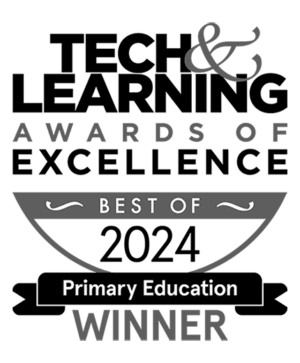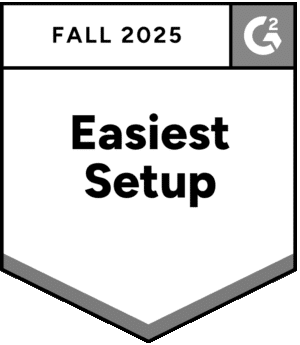Featured Resource
Why Over Half of California School Districts Trust SchoolStatus
Read More >Join Mission: Attendance to reduce chronic absenteeism in 2025-26! >> Learn How <<





Have you ever been compared to an athletic coach? Ashley Taplin believes there are some similarities between athletic coaches and ICs, and has even taken a play from their “playbook” by creating a cheat sheet of in-the-moment coaching and teaching tactics.
As a basketball coach’s wife, I enjoy hearing about last-minute preparations from my husband. One evening before a game, my husband showed me his “play card” of the various sets and plays he calls during a game, categorized by defense, offense, zone, specials, and more. He explained to me that this card was a way for him to have a quick reminder on hand of reliable plays to reference in the heat of the game.
As I walked back to the stands, I started to think: why don’t we, as educators, use play cards for teaching? Creating one could bring more intentionality to planning and provide ideas for in-the-moment instructional decisions.
A game day card is a cheat sheet for you as a coach. It is the information you value most during a game. The goal is to develop an organized, easy to follow resource sheet. Given the emotion of a game, it is nice to have something of value and comfort to refer to when you need to make a decision. It also guarantees that you will never forget what is most important to you.
Basketball Immersion
That night, I began creating my first coaching play card full of categorized instructional strategies. The tool was small, simple in design but held so much information. I soon realized it could be personalized in many ways!
Getting started with play cards requires you to think deeply about what topics or strategies you want to have handy pointers for. For my first instructional strategies play card, I chose six categories that I believe encompass a well-rounded lesson structure: grouping, lesson openers, student voice, movement, check for understanding, and lesson closures.
Finally, I added a section for “Questions to ask” as a way to help teachers develop their questioning skills, providing research-based prompts that deepen learning and increase rigor.
While a teacher would use the above example for planning or in the classroom, as a coach I discovered I could use play cards while designing professional learning. The process of preparing play cards is a great way to organize what strategies I want to include as I craft the PD session. Afterward, I hand them out to participating teachers as a reference guide for them to take back to their campus, reminding them of our “game plan” from the day.
Pro tip: link out the play card items to further resources so teachers can continue their learning after a session!
Most recently, I created a card specifically for coaching conversations with prompts for reflection and interaction. To build this card, I referred to sentence stems from The EduCoach Survival Guide, questions from Michael Bungay Stanier’s The Coaching Habit, and prompts from Episode 69 of Elana Aguilar’s podcast.
Each section from the Educoach Survival Guide (seeking to understand, seeking to empower, seeking to influence, and seeking to nurture) provides sample stems a coach might lead with or ask as a follow-up within a conversation. The questions from The Coaching Habit are two of my favorites that I often ask when beginning or continuing a coaching conversation. And finally, the prompts from Elana Aguilar help a coach respond to a teacher when they say “I don’t know how…”.
I have referenced each of these resources in my own coaching and think this card is helpful for fellow coaches to keep in their back pocket (literally!) and carry with them to coaching sessions.
I hope this has inspired teachers and coaches to craft some of their own play cards—individually or collaboratively—that are tailored to their personal needs. You don’t need to list every strategy you’ve ever used, but rather make this a creative way to assist (basketball pun intended!) in implementing your instructional practices.
In the words of head coach, Kyle Julius, building a play card “creates a peaceful calm going into the game knowing we were well prepared and set up to play with a sharp focus and clear mind.”
Ashley Taplin is a secondary math specialist in Texas. Prior to her current role, she taught high school math and was a department dean. Ashley has a passion for both empowering teachers to build on their strengths and helping students make connections between what they’re learning. In addition to her role, she also delivers professional development, works with schools to implement PLCs and incorporate strategies in the classroom, and writes curriculum for her district. As part of her curriculum writing, Ashley has embedded SEL strategies within the math curriculum and helps guide teachers to make it a daily practice within the content.
 Ashley TaplinAshley Taplin, a secondary math specialist in Texas, leverages her background in high school math teaching and departmental leadership to empower teachers and foster student connections in learning. She delivers professional development, facilitates PLCs, integrates strategies, and embeds SEL practices in district curriculum, advocating for daily implementation in math content.
Ashley TaplinAshley Taplin, a secondary math specialist in Texas, leverages her background in high school math teaching and departmental leadership to empower teachers and foster student connections in learning. She delivers professional development, facilitates PLCs, integrates strategies, and embeds SEL practices in district curriculum, advocating for daily implementation in math content.
News, articles, and tips for meeting your district’s goals—delivered to your inbox.















Ready to learn more about our suite of solutions?
